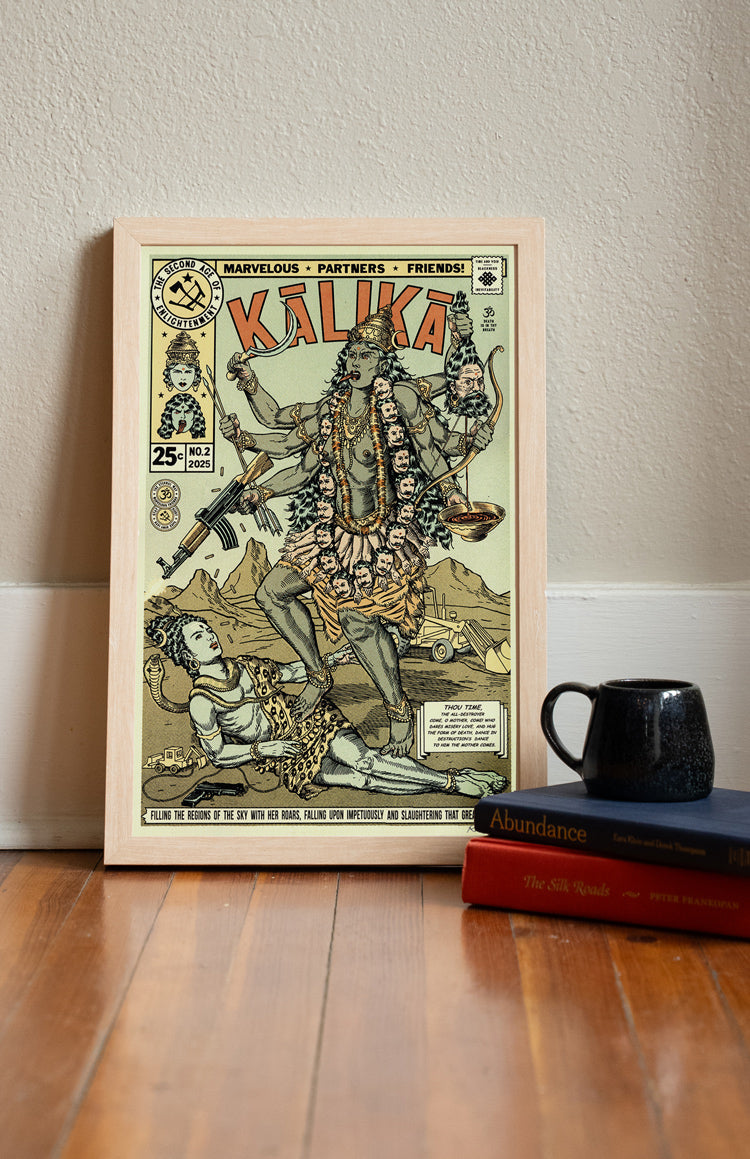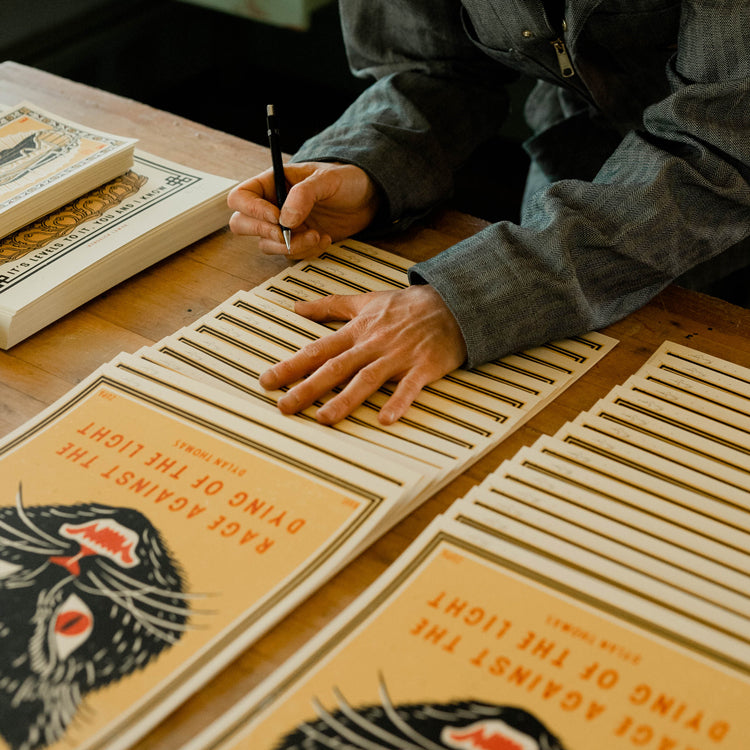THE INSPIRATION BEHIND THE ART:
This image depicts the Hindu goddess Kali. Her name is an ancient word meaning blackness, time, and void. She represents the abyss of time that inevitably swallows all things—the force that brings about death and dissolution. She has been the subject of many of my works.
This is my interpretation of her most famous image: Kali standing on Shiva, holding a sword, and catching the blood from a severed head in a bowl. This scene has been reimagined thousands of times throughout history. The story goes like this:
A demon named Raktabija was wreaking havoc on the world. A group of gods united to defeat him using all manner of weapons, but every time Raktabija was struck, each drop of his blood that touched the ground created a new duplicate of him. Every attack only multiplied the problem until the battlefield was overrun with countless copies of the demon.
In desperation, the goddess Durga summoned Kali (in some versions, Durga herself transforms into Kali). Kali appeared in a furious trance and immediately destroyed all of Raktabija’s duplicates. She then beheaded the original demon and drank every drop of his blood before it could reach the earth, preventing any more duplicates from forming.
Though the demon was defeated, Kali’s rage did not subside. She remained in her violent trance, rampaging across the earth and causing even greater destruction than Raktabija himself. The gods turned to Shiva, Kali’s husband, and pleaded for his help. Shiva tried to calm her, but she was too consumed by fury to hear him. In a final act of compassion, Shiva threw himself beneath her feet. When she stepped on him and realized what she had done, the shock brought her out of her trance. Her anger dissolved, and balance was restored to the world.












